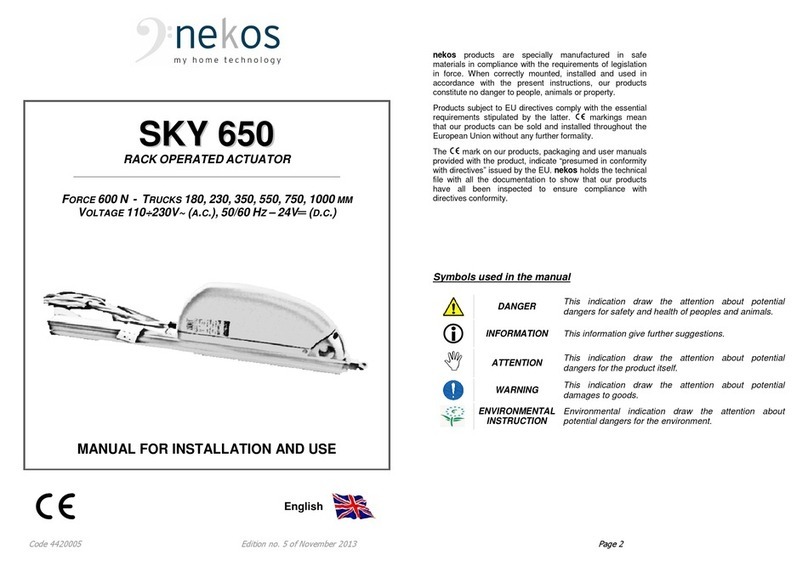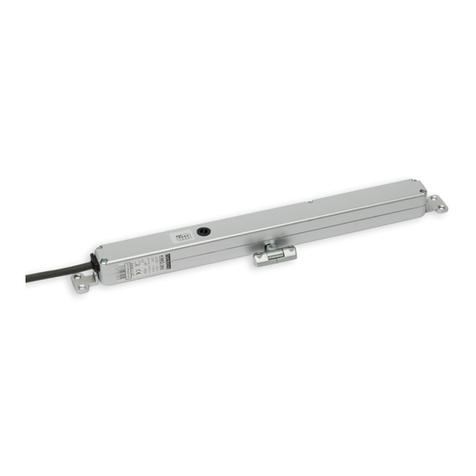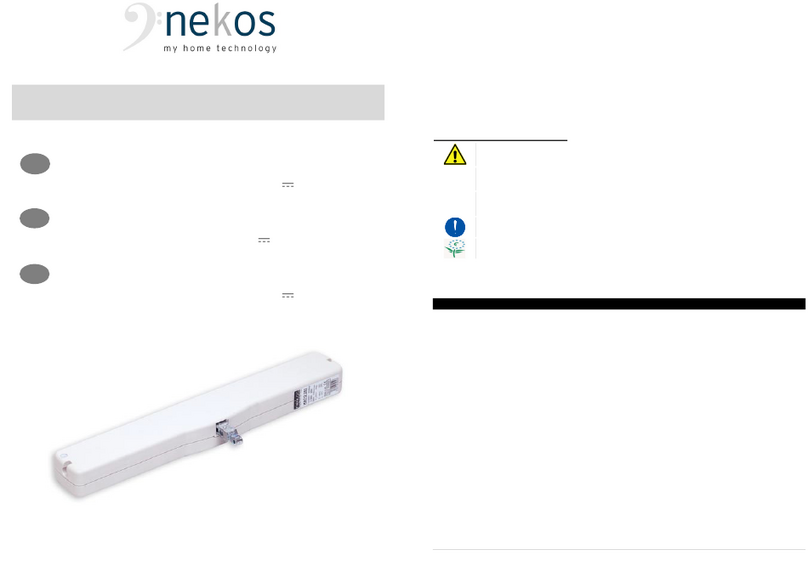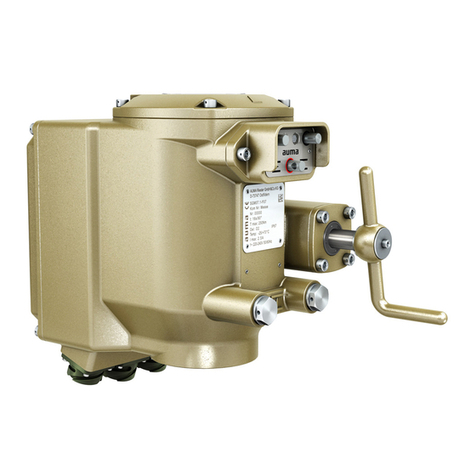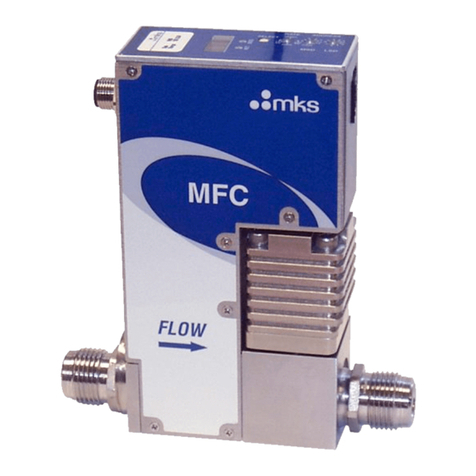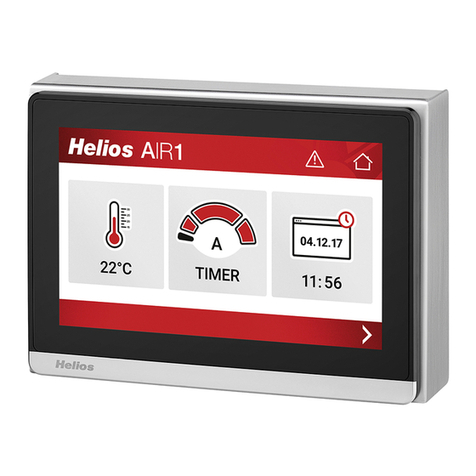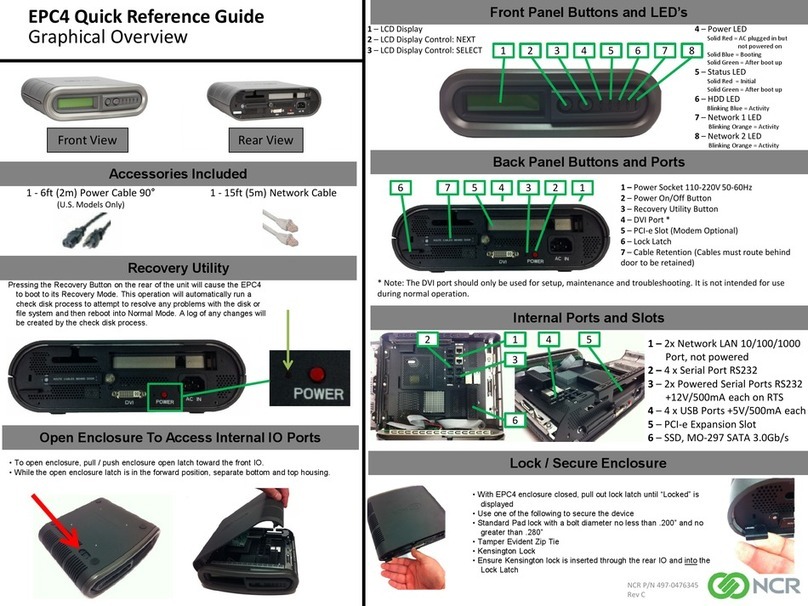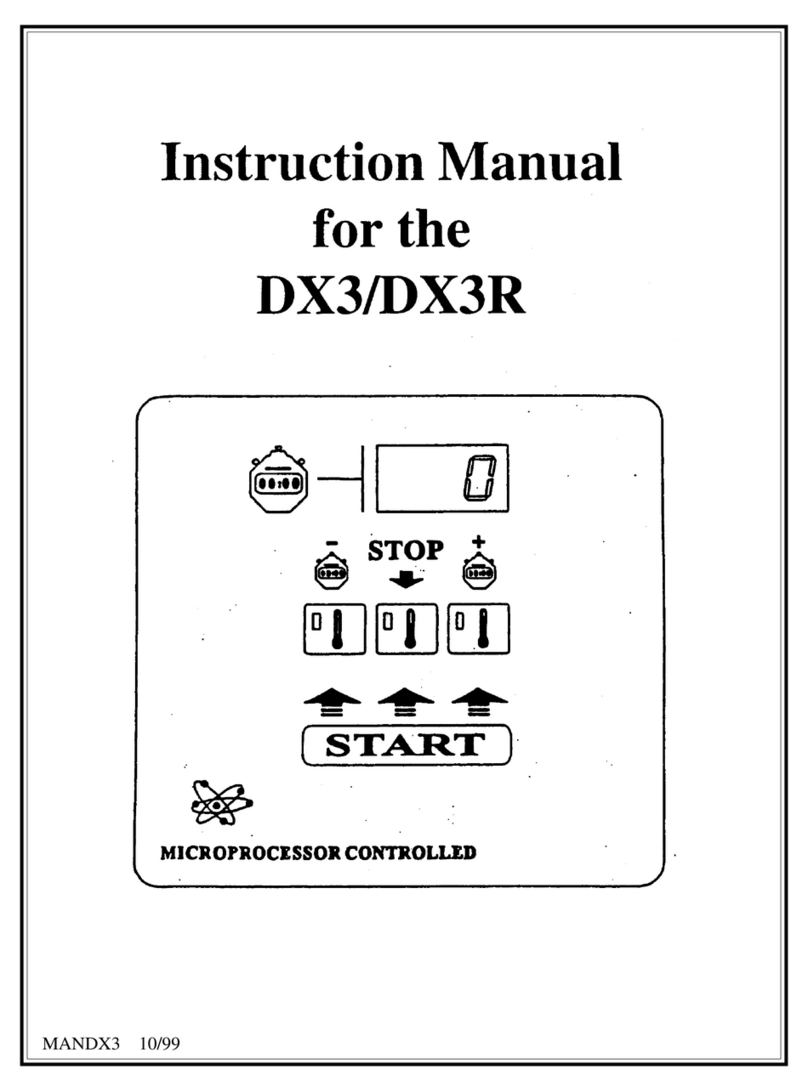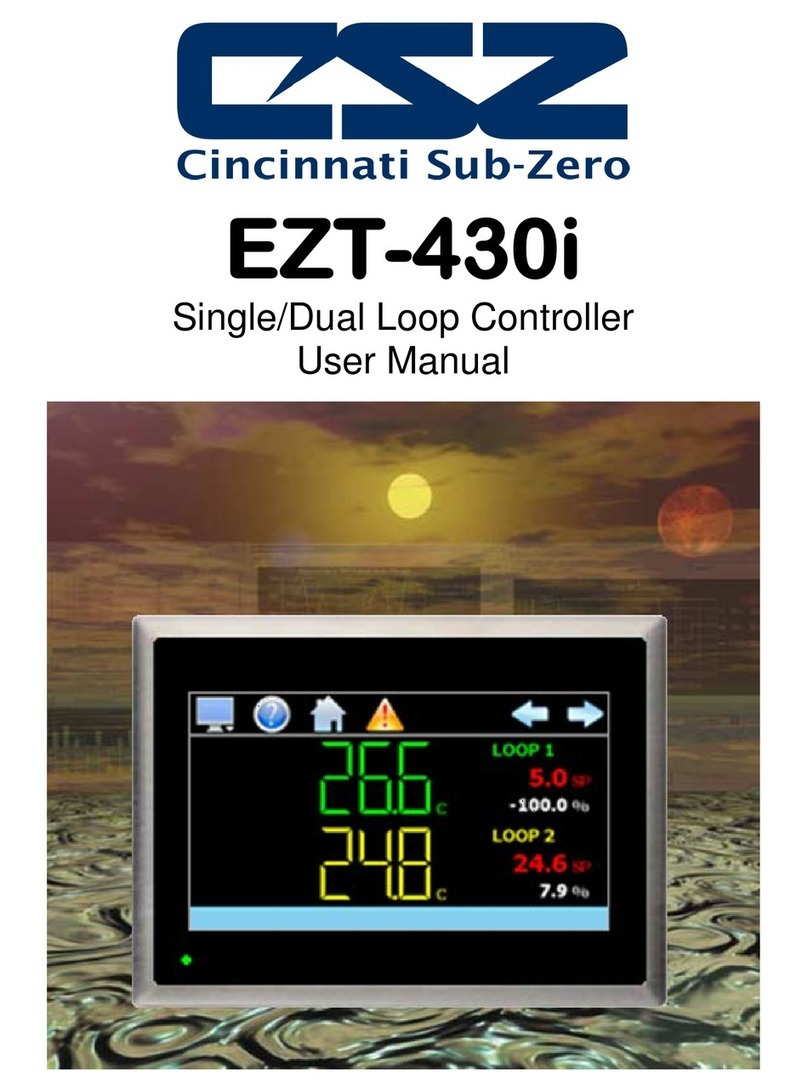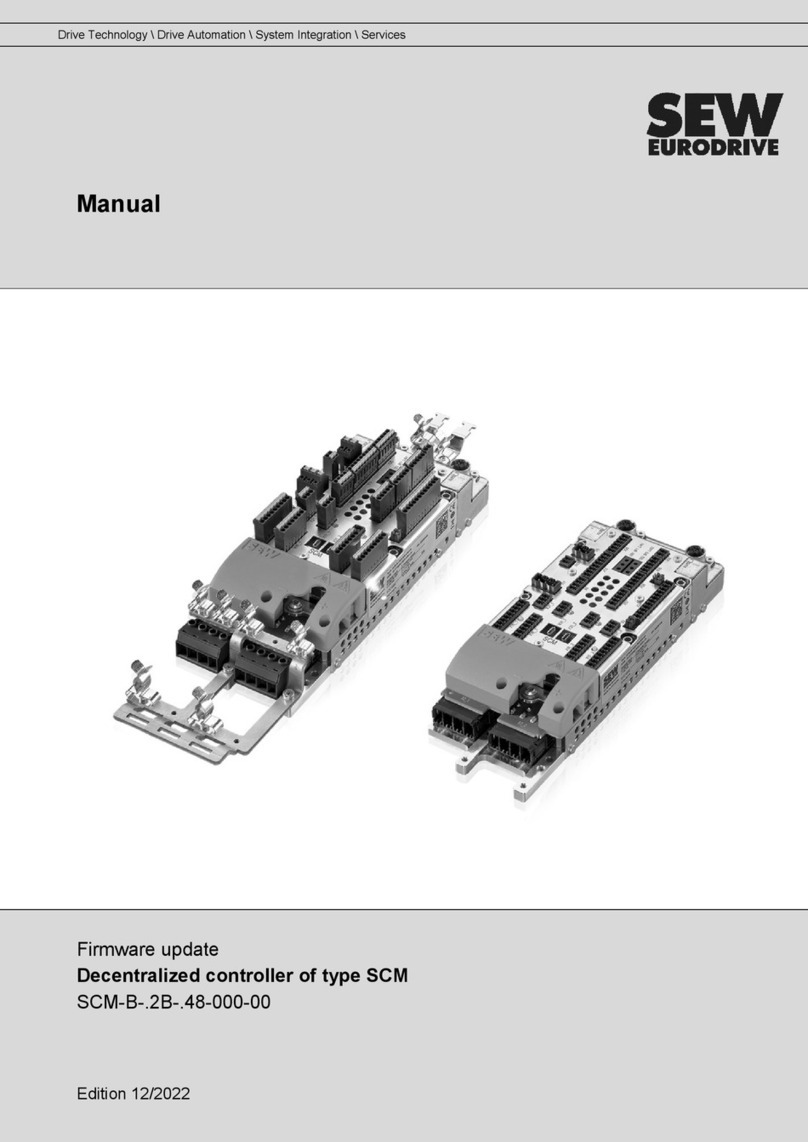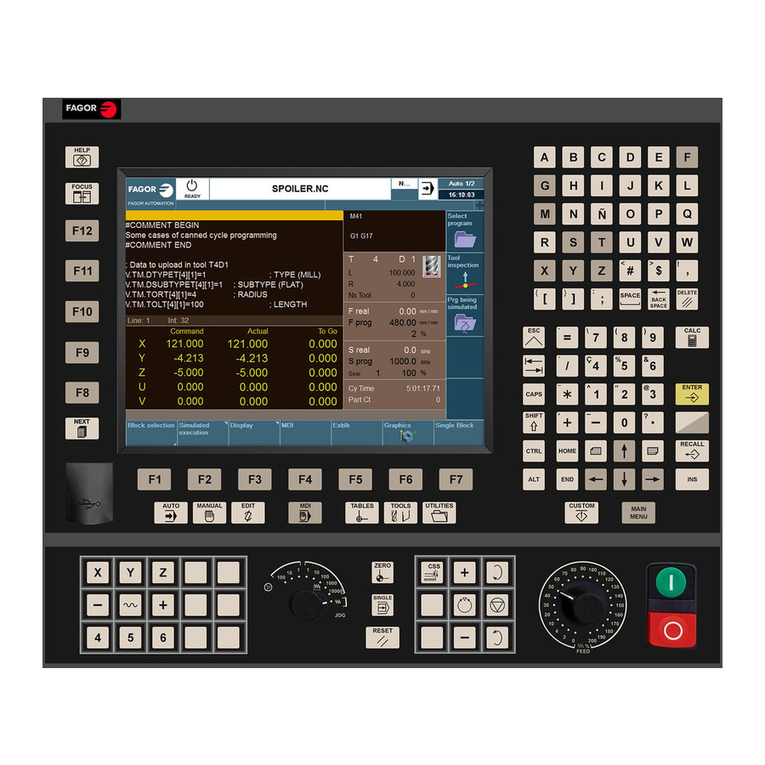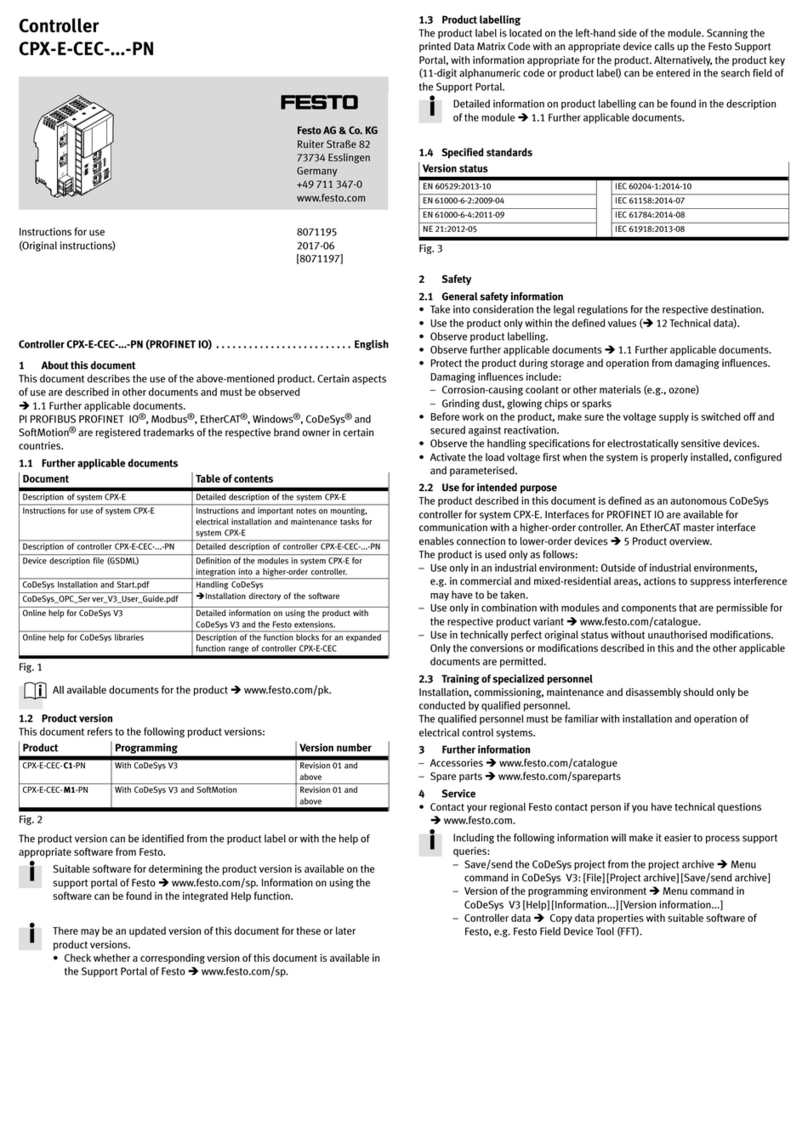nekos INKA 356 Series User manual

INKA 356
INKA356 230V, INKA356 230V Syncro³, INKA356 24V, INKA356 24V Syncro³
INSTRUCTION MANUAL
CHAIN ACTUATOR
Force 350N –
Strokes 300, 600, 800, 1000 mm
Electrical feeding
NEKOS S.r.l. -
Via Capitoni, 7/5
+39 0424 411011
EN
4420085 – Rev. 2010
INKA 356
INKA356 230V, INKA356 230V Syncro³, INKA356 24V, INKA356 24V Syncro³
INSTRUCTION MANUAL
CHAIN ACTUATOR
Strokes 300, 600, 800, 1000 mm
Electrical feeding
110-230V~ 50/60Hz and 24V
Via Capitoni, 7/5
- 36064 Colceresa – VI
–
+39 0424 411011
– +39 0424 411013 - www.nekos.it -
info@nekos.it
INKA356 230V, INKA356 230V Syncro³, INKA356 24V, INKA356 24V Syncro³
–
ITALY
2
USER INSTRUCTIONS
CAUTION. Carefully observe all the following installation
instructions to ensure personal safety.
The device is not intended for use by persons (including children)
with reduced physical, sensory or mental capabilities, or lacking
experience and knowledge. Do not allow children to play with the
fixed controls and keep any remote-control units out of their reach.
Have installation checks performed periodically by qualified
personnel from a service centre authorised by the manufacturer.
Do not use if repair or adjustment is required.
CAUTION: if the power cable is damaged, it must be replaced by
qualified personnel from a service centre authorised by the
manufacturer.
CAUTION. Disconnect the power supply during cleaning or
maintenance operations. Do not use solvents or jets of water to
wash the appliance; the appliance should not be submerged in
water.
In the event of fault or malfunction, switch off the device at the
main switch. All repairs and adjustments (e.g. setting the stroke)
must only be performed by qualified personnel from a service
centre authorised by the manufacturer.
Always request exclusive use of original spare parts. Failure to
respect this condition could compromise safety and invalidate the
benefits contained in the warranty for the appliance. In the event of
any problems or queries, consult your agent or contact the
manufacturer directly.
The A-weighted sound pressure level is less than 70dB(A).
Carefully preserve these instructions after installation.

INSTALLER
nekos
products have been manufactured in accordance with safety standards and conforms to
the stipulations of current standards in force.
When correctly assembled, installed and used according to the present instructions, they will not
generate any danger for persons, animals or items.
Symbols used in the manual
DANGER
Contents
1.
SECURITY RULES
................................
2.
FORMULAS AND REC
OMMENDATIONS FOR INSTALLATION
2.1
Calculat
ion of opening / closure force
2.2
Maximum openi
ng according to height of sash
3.
USE OF
ACTUATOR IN ‘SYNCRO³’ VERSION
3.1
Recognition
................................
3.2
Use of a Syncro³-versio
n actuator
4.
GENERAL
INFORMATION ABOUT THE ACTUATOR
5.
TECHNICAL DATA
................................
6.
CONSTRUCTION AND REGULATORY REFERENCES
7.
ID PLATE AND MARKING DATA
8.
ACTUATOR DIMENSIONS
................................
9.
ELECTRICAL POWER SUPPLY
9.1
Se
lection of power cable section
10.
INSTR
UCTIONS FOR ASSEMBLY
10.1
Warning
................................
10.2
Prepar
ation of actuator for assembly
10.3
Calculation of the numb
er of push / retention points
10.4
Screw holes for sup
port brackets and sash hinges
10.5
Assembly with opening outwards
10.6
Assembly with opening inwards
11.
ELECTRICAL CONNECTIONS
11.1
Connections of INKA356
11.2
C
onnections of INKA356 Syncro³
12.
PROGRAMMING THE ACTUATOR
12.1
INKA 356 Programming
................................
12.2
RESET Procedure -
Valid for the single
configurations
with the K
12.3
Overlap acquisition
................................
12.4
LED Light signals
................................
13.
CHECKING FOR CORRECT ASSEMBLY
14.
EMERGENCY MANOEU
VRES, MAINTENANCE OR CLEANING
15.
ENVIRONMENT
AL PROTECTION
16.
CERTIFICATE
OF GUARANTEE
17.
RWA CERTIFICATE
................................
18.
DECLARATION OF INCORPORATION (FOR A PARTLY COMPLETED MACHINE) AND
EC DECLARATION OF CONFORMITY
3
INSTALLER
INSTRU
CTIONS
products have been manufactured in accordance with safety standards and conforms to
the stipulations of current standards in force.
When correctly assembled, installed and used according to the present instructions, they will not
generate any danger for persons, animals or items.
Symbols used in the manual
This indication draw the attention about potential dangers for
safety and health of peoples and animals.
................................
................................
................................
OMMENDATIONS FOR INSTALLATION
................................
ion of opening / closure force
................................
................................
ng according to height of sash
................................
ACTUATOR IN ‘SYNCRO³’ VERSION
................................
................................
................................
................................
................................
n actuator
................................
................................
INFORMATION ABOUT THE ACTUATOR
................................
................................
................................
................................
CONSTRUCTION AND REGULATORY REFERENCES
................................
ID PLATE AND MARKING DATA
................................
................................
................................
................................
................................
ELECTRICAL POWER SUPPLY
................................
................................
lection of power cable section
................................
................................
UCTIONS FOR ASSEMBLY
................................
................................
................................
................................
................................
ation of actuator for assembly
................................
................................
er of push / retention points
................................
port brackets and sash hinges
................................
Assembly with opening outwards
– top hung,
lower part opening towards the
Assembly with opening inwards
– bottom hung, higher part
opening towards the
ELECTRICAL CONNECTIONS
................................
................................
Connections of INKA356
................................................................
................................
onnections of INKA356 Syncro³
................................
................................
PROGRAMMING THE ACTUATOR
................................
................................
................................
................................
................................
Valid for the single
-
actuator configuration, Syncro³ configuration or
with the K
-LOCK electro-lock ................................
................................
................................
................................
................................
................................
................................
................................
CHECKING FOR CORRECT ASSEMBLY
................................
................................
VRES, MAINTENANCE OR CLEANING
................................
AL PROTECTION
................................
................................
OF GUARANTEE
................................
................................
................................
................................
................................
DECLARATION OF INCORPORATION (FOR A PARTLY COMPLETED MACHINE) AND
EC DECLARATION OF CONFORMITY
................................
................................
CTIONS
products have been manufactured in accordance with safety standards and conforms to
When correctly assembled, installed and used according to the present instructions, they will not
This indication draw the attention about potential dangers for
safety and health of peoples and animals.
................................
....................... 4
................................
................ 5
................................
................... 5
................................
..................................... 6
................................
............ 6
................................
.......................... 6
................................
....................... 6
................................
................................. 7
................................
....................... 7
................................
.............................. 8
................................
.................................. 8
................................
........... 8
................................
.................................. 9
................................
....................... 10
................................
............................. 10
................................
.............................. 10
................................
.................. 11
................................
........................... 11
................................
............................. 11
lower part opening towards the
exterior ...... 12
opening towards the
interior .. 13
................................
................................... 14
................................
.... 15
................................
....................... 15
................................
............................ 16
................................
...... 16
actuator configuration, Syncro³ configuration or
................................
...... 17
................................
............. 18
................................
............... 18
................................
.................. 20
................................
............. 20
................................
............................. 20
................................
................................ 20
................................
................... 22
DECLARATION OF INCORPORATION (FOR A PARTLY COMPLETED MACHINE) AND
................................
...................... 23
1. SECURITY RULES
C
AREFULLY OBSERVE ALL
PERSONAL SAFETY
.
I
MPROPER INSTALLATION
MANDATORY RISK ANALY
The Nekos electrical actuators comply with the Machinery Directive (2006/42/EC), Standard
IEC 60335-2-
103 (Particular requirements for drives for gates, doors and windows) and
other directives and regulations indicated in the attached Declarations of Incor
CE Conformity (at the end of the manual). According to the Machinery Directive, actuators
are “partly completed machinery” intended for incorporation into doors and windows. The
manufacturer/supplier of the window is required, with exclusive r
compliance of the entire system with the applicable standards and to issue CE certification.
We strongly discourage any use of the actuators other than that specified and therefore, in
any case, the supplier of the complete sys
For systems installed at a height of less than 2.5 m above floor level or other levels
accessible to users, the manufacturer/supplier of the window must conduct
regarding potential harm (violent blows, crushing, wounds) caused to people by normal use
or possible malfunction or accidental breakage of the automated windows, and to
implement suitable
protective measures
r
ecommended by the specified standard:
-
controlling the actuators via a “deadman’s button” placed near the system and within
the operator’s field of view, to ensure that people are out of the way during operation.
The button must
be placed at a height of 1.5
public; or:
-
use of contact safety systems (also included in the actuators) that ensure a maximum
closing force of 400/150/25 N, measured in accordance with paragraph BB.20.107.2 of
IEC 60335-2-103; or:
- use of non-
contact safety systems (lasers, light grids); or:
-
use of fixed safety barriers that prevent access to moving parts.
Automated windows are deemed adequately protected if they:
-
are installed at a height of >2.5 m; or:
- have a leading-
edge opening of <
-
are part of a smoke and heat evacuation system for emergency use only.
In any case, moving parts of windows that could fall below 2.5 m following breakage of a
system component need to be fixed or
falling or collapsing
: e.g. the use of safety arms on bottom
The device is not intended for use by persons (including children) with reduced
physical, sensory or mental capabilities, or lacking experience
not allow children to play with the fixed controls and keep any remote
out of their reach.
The actuator is destined exclusively for installation indoors. For any special
application we recommend you consult the manufacturer
After removing packaging, check for any damage on the appliance.
Always request exclusive use of original spare parts. Failure to respect this
condition could compromise safety and invalidate the benefits contained in the
warranty for the appl
iance.
In the event of any problems or queries, consult your agent or contact the
manufacturer directly.
4
AREFULLY OBSERVE ALL
THE FOLLOWING INSTAL
LATION INSTRUCTIONS
MPROPER INSTALLATION
CAN SERIOUSLY ENDANG
MANDATORY RISK ANALY
SIS AND PROTECTION MEASURES
.
The Nekos electrical actuators comply with the Machinery Directive (2006/42/EC), Standard
103 (Particular requirements for drives for gates, doors and windows) and
other directives and regulations indicated in the attached Declarations of Incor
CE Conformity (at the end of the manual). According to the Machinery Directive, actuators
are “partly completed machinery” intended for incorporation into doors and windows. The
manufacturer/supplier of the window is required, with exclusive r
esponsibility, to ensure the
compliance of the entire system with the applicable standards and to issue CE certification.
We strongly discourage any use of the actuators other than that specified and therefore, in
any case, the supplier of the complete sys
tem retains full liability.
For systems installed at a height of less than 2.5 m above floor level or other levels
accessible to users, the manufacturer/supplier of the window must conduct
regarding potential harm (violent blows, crushing, wounds) caused to people by normal use
or possible malfunction or accidental breakage of the automated windows, and to
protective measures
in view of these. Such measures include those
ecommended by the specified standard:
controlling the actuators via a “deadman’s button” placed near the system and within
the operator’s field of view, to ensure that people are out of the way during operation.
be placed at a height of 1.5
m and operated by key if accessible to the
use of contact safety systems (also included in the actuators) that ensure a maximum
closing force of 400/150/25 N, measured in accordance with paragraph BB.20.107.2 of
contact safety systems (lasers, light grids); or:
use of fixed safety barriers that prevent access to moving parts.
Automated windows are deemed adequately protected if they:
are installed at a height of >2.5 m; or:
edge opening of <
200 mm and a closing speed of <15 mm/s; or:
are part of a smoke and heat evacuation system for emergency use only.
In any case, moving parts of windows that could fall below 2.5 m following breakage of a
system component need to be fixed or
secured in
order to prevent them from suddenly
: e.g. the use of safety arms on bottom
-
hung windows.
The device is not intended for use by persons (including children) with reduced
physical, sensory or mental capabilities, or lacking experience
not allow children to play with the fixed controls and keep any remote
The actuator is destined exclusively for installation indoors. For any special
application we recommend you consult the manufacturer
beforehand.
After removing packaging, check for any damage on the appliance.
Always request exclusive use of original spare parts. Failure to respect this
condition could compromise safety and invalidate the benefits contained in the
iance.
In the event of any problems or queries, consult your agent or contact the
LATION INSTRUCTIONS
TO ENSURE
CAN SERIOUSLY ENDANG
ER SAFETY
.
The Nekos electrical actuators comply with the Machinery Directive (2006/42/EC), Standard
103 (Particular requirements for drives for gates, doors and windows) and
other directives and regulations indicated in the attached Declarations of Incor
poration and
CE Conformity (at the end of the manual). According to the Machinery Directive, actuators
are “partly completed machinery” intended for incorporation into doors and windows. The
esponsibility, to ensure the
compliance of the entire system with the applicable standards and to issue CE certification.
We strongly discourage any use of the actuators other than that specified and therefore, in
For systems installed at a height of less than 2.5 m above floor level or other levels
accessible to users, the manufacturer/supplier of the window must conduct
risk analysis
regarding potential harm (violent blows, crushing, wounds) caused to people by normal use
or possible malfunction or accidental breakage of the automated windows, and to
in view of these. Such measures include those
controlling the actuators via a “deadman’s button” placed near the system and within
the operator’s field of view, to ensure that people are out of the way during operation.
m and operated by key if accessible to the
use of contact safety systems (also included in the actuators) that ensure a maximum
closing force of 400/150/25 N, measured in accordance with paragraph BB.20.107.2 of
200 mm and a closing speed of <15 mm/s; or:
are part of a smoke and heat evacuation system for emergency use only.
In any case, moving parts of windows that could fall below 2.5 m following breakage of a
order to prevent them from suddenly
hung windows.
The device is not intended for use by persons (including children) with reduced
physical, sensory or mental capabilities, or lacking experience
and knowledge. Do
not allow children to play with the fixed controls and keep any remote
-control units
The actuator is destined exclusively for installation indoors. For any special
beforehand.
After removing packaging, check for any damage on the appliance.
Always request exclusive use of original spare parts. Failure to respect this
condition could compromise safety and invalidate the benefits contained in the
In the event of any problems or queries, consult your agent or contact the

2.
FORMULAS AND RECOMMENDATIONS FOR INSTALLATION
2.1.
Calculation of opening / closure force
Using the formulas on this page, approximate calculations can be made for the force
required to open or close the window considering all the factors that determine the
calculation.
Symbols used for the calculation
F (Kg) = Force for opening or closing
C (cm) = Opening stroke (actuator stroke)
For horizontal light domes or skylights
F = 0,54 x P
(Eventual weight of snow or wind on the
cupola should be
calculated separately)
The chart below shows the
force executed from the actuator i
type of mounting.
5
FORMULAS AND RECOMMENDATIONS FOR INSTALLATION
Calculation of opening / closure force
Using the formulas on this page, approximate calculations can be made for the force
required to open or close the window considering all the factors that determine the
Symbols used for the calculation
F (Kg) = Force for opening or closing
P (Kg) =
Weight of the window (mobile sash only)
C (cm) = Opening stroke (actuator stroke)
H (cm) = Height of the mobile sash
For horizontal light domes or skylights
(Eventual weight of snow or wind on the
calculated separately)
.
For vertical windows
TOP HUNG WINDOWS
,
OUTWARD OPENING
BOTTOM HUNG WINDOWS
F = 0,54 x P x C : H
(Eventual load of favourable or unfavourable
wind on the sash should be calculated
separately.)
force executed from the actuator i
n fun
ction of the stroke and
FORMULAS AND RECOMMENDATIONS FOR INSTALLATION
Using the formulas on this page, approximate calculations can be made for the force
required to open or close the window considering all the factors that determine the
Weight of the window (mobile sash only)
H (cm) = Height of the mobile sash
For vertical windows
OUTWARD OPENING
(A)
BOTTOM HUNG WINDOWS
(B)
F = 0,54 x P x C : H
(Eventual load of favourable or unfavourable
wind on the sash should be calculated
ction of the stroke and
6
2.2. Maximum opening according to height of sash
The actuator can be recessed mounted in the frame as well as outside on the frame or on the
sash. In any case the actuator stroke is in accordance with the height of the sash and its
application. Check that, during stroke, the actuator chain does not touch the profile of the sash
and that there are no obstacles for the opening or it does not exert force on the window frame.
ATTENTION. For safety reasons the actuator should not be assembled if dimensions are
inferior to those indicated in the table below. In the event that the height of the sash should
be lower, call on the manufacturer to check the appliance.
Mode of installation Selection of actuator stroke
300 600 800 1000
Light domes, skylights or vertical top hung windows opening
outwards with frontal assembly 350 650 900 -
Top hung windows opening outwards with horizontal assembly 350 650 900 -
Bottom hung windows (motor on frame) 400 800 1200 1350
Bottom hung windows (motor on sash) Consult manufacturer
3. USE OF ACTUATOR IN SYNCRO³ VERSION
In the SYNCRO³ version the actuator has been equipped with the new system patented by
NEKOS for coordinated synchronisation of a group of actuators (up to eight at the same
time). Electronic control of speed is completely automatic device inside the actuator and
does not require any external control station: just connect the feeder cable communication
wires to each other (see diagram on page 15-16) and carry out reset procedure.
3.1. Recognition
Three elements differentiate the SYNCRO3 version of the actuator from other actuators in
the INKA 356 series:
The technical data label with the “..… SYNCRO3” label.
The SYNCRO label to one side of the technical data label on the
actuator.
Only for 110-230V~ version, the electrical cable with 5 wires (3+2).
3.2. Use of a Syncro³-version actuator
The Syncro³ version of the actuator is used when the window is particularly heavy or wide
(more than approximately 1.2 m wide) and a single actuator doesn't allow complete
closure of the window, especially in the corners, therefore making it necessary to have
two or more retention points.
When a group of Syncro³ actuators is used, the movement of the window sashes occurs
in a synchronized manner, i.e., uniformly without interruptions and/or variations in the
speeds of the actuators. If one of the actuators stops, due to mechanical obstruction or
an electronic problem, the other actuators stop as well, thereby guaranteeing the integrity
of the window.
Recall that the force exerted by a group of actuators installed on the same window sash
is equivalent to the sum of the forces exerted by each actuator; so assembling two
actuators doubles the force exerted on the window.
IMPORTANT: when calculating the dimensions of a system with multiple Syncro³
actuators, it is advisable to consider the force of each actuator as 90% of that
stated on the plate.

7
4. GENERAL INFORMATION ABOUT THE ACTUATOR
The actuator of the INKA 356 series moves the window by means of a chain that runs
inside the device. The chain is moved by a gearmotor driven by an electric motor, which
in turn is powered and controlled by an electronic card. The opening and closing
movement is determined by the polarity of the power supply wires depending on how the
wiring is carried out (see wiring diagrams on page 15).
The position of the chain’s stopping point for the closing stroke-end (re-entry of the chain)
is self-determined by power absorption; therefore no adjustments are required for closing.
The actuator leaves the factory with the chain protruding about 1 cm from the re-entry
stroke-end to facilitate its assembly on the window.
The actuator is coupled to the support brackets by means of a (Nekos patented) quick-
connect coupling, without clamping screws, that allows the actuator to rotate in order to
follow the chain’s stroke, even on windows with reduced height.
5. TECHNICAL DATA
Model
INKA356
230V
INKA356
230V
SYNCRO³
INKA356
24V
INKA356
24V
SYNCRO³
Force exerted by thrust and traction (F
N
) 350 N (see force chart)
Strokes (SV)
300
(100,200) –
600
(400,500) –
800
(600,700) –
1000 (800,900)
Power supply voltage (U
N
) 110-230V~ 50/60Hz 24V
Rated absorbed current (I
N
) 0,33 A – 0,22 A (230V) 0,950 A
Power absorbed at nominal load (P
N
) 27-29 W 23 W
No load speed 11 / 9,5 mm/s
Duration of no load stroke Stroke 300 / 600 / 800 / 1000 = 28 / 54 / 72 / 90 s
Electrical insulation Class II Class III (Selv)
Type of service (D
R
) 2 cycles
Operating temperature - 10 + 70 °C
Protection index for electrical devices IP32
Soft-stop function Yes
Relax function Yes
Adjustment of connection to window
frame
Position self-determining
Parallel powering of two or more motors Yes (max 10)
Synchronised function
No Yes
(Syncro³)
max 8
No Yes
(Syncro³)
max 8
Holding nominal force (it can vary
according to the chosen brackets)
1800 N
Stroke-end at opening Electronic by dip-switch setting
Stroke-end at closing At absorption of power
Signalling ‘window open/window closed’ Yes, with specific device to request at order
Type and length of power cable
H05VV-F –
2m
FRR/2
– 2,5 m S-
FG4GA/2-
2m
S-
FG4GA/2-
2m
Dimensions 34,6x37
L468/624/727/824
34,6x37
L408/564/667/764
Weight 0,9 / 1,4 / 1,8 / 2,2 kg 0,8 / 1,3 / 1,7 / 2,1 kg
The data indicated in these figures is not binding and is subject to variation without notification.
6.
CONSTRUCTION AND REGULATORY REFERENCES
INTENDED USE.
The actuator is designed and built to move awning windows,
bottom-
hung windows, parallel
and skylights. Its use is
conditioning of rooms (230V~ version), while the 24V
smoke and heat exhaust systems controlled by appropriate control units
other use is strongly discouraged, with the supp
case retaining sole liability.
The actuator is manufactured in accordance with the Directives and following
Regulations listed in the attached Declaration of Incorporation and Conformity
Electrical connections must conform to regulations in force for the design and set
up of electrical equipment.
To ensure efficient separation from the grid, an approved type of bipolar “dead
switch should be used. An omnipolar general power switch wit
of 3 mm between contacts should be installed upstream of the control line.
The actuator is individually packaged in a cardboard container and each pack contains:
110-230
V~ 50/60Hz or 24V
Instructions manual.
Installation accessories (if requested).
Brackets
are not included in the parcel and have to be requested separately in function of
the applications.
IMPORTANT.
The Syncro³ version of the actuator is packed in a cardboard box with
two units and is shipped
already tested. However, the RESET procedure must still be
performed (see section 12.2)
.
When installing a system that requires the use of several Syncro³ actuators or a K
LOCK electro-
lock, a new RESET procedure must be performed
7.
ID PLATE AND MARKING
The INKA 356 series actuators have CE marking and comply with the Standards listed in
the Declaration of Conformity. They also come with a Declaration of Incorporation, due to
their classification by the Machinery Directive as “partly completed machin
declarations are included in the final pages of this manual.
The plate data is displayed on an adhesive label placed on the outside of the casing,
which must remain intact and visible.
The main information it displays includes: manufacturer's ad
number, technical characteristics, production date and serial number.
In the event of a complaint, please indicate the serial number (SN) displayed on the label.
An explanation of the symbols used on the label to abbreviate the
characteristics is given in the table in the chapter on “TECHNICAL DATA”
8.
ACTUATOR DIMENSIONS
The main overall dimensions of the actuator are given in the table below for bottom
and awning sashes. However, for perfect application on the
request the drawings in order to determine the best solution.
8
CONSTRUCTION AND REGULATORY REFERENCES
The actuator is designed and built to move awning windows,
hung windows, parallel
-
opening windows, light domes, dormer windows
and skylights. Its use is
specifically intended for ventilation and natural air
conditioning of rooms (230V~ version), while the 24V
version is intended for
smoke and heat exhaust systems controlled by appropriate control units
other use is strongly discouraged, with the supp
lier of the entire system in any
case retaining sole liability.
The actuator is manufactured in accordance with the Directives and following
Regulations listed in the attached Declaration of Incorporation and Conformity
Electrical connections must conform to regulations in force for the design and set
up of electrical equipment.
To ensure efficient separation from the grid, an approved type of bipolar “dead
switch should be used. An omnipolar general power switch wit
of 3 mm between contacts should be installed upstream of the control line.
The actuator is individually packaged in a cardboard container and each pack contains:
V~ 50/60Hz or 24V
electrical actuator.
Installation accessories (if requested).
are not included in the parcel and have to be requested separately in function of
The Syncro³ version of the actuator is packed in a cardboard box with
already tested. However, the RESET procedure must still be
.
When installing a system that requires the use of several Syncro³ actuators or a K
lock, a new RESET procedure must be performed
.
ID PLATE AND MARKING
DATA
The INKA 356 series actuators have CE marking and comply with the Standards listed in
the Declaration of Conformity. They also come with a Declaration of Incorporation, due to
their classification by the Machinery Directive as “partly completed machin
declarations are included in the final pages of this manual.
The plate data is displayed on an adhesive label placed on the outside of the casing,
which must remain intact and visible.
The main information it displays includes: manufacturer's ad
dress, product name
number, technical characteristics, production date and serial number.
In the event of a complaint, please indicate the serial number (SN) displayed on the label.
An explanation of the symbols used on the label to abbreviate the
characteristics is given in the table in the chapter on “TECHNICAL DATA”
ACTUATOR DIMENSIONS
The main overall dimensions of the actuator are given in the table below for bottom
and awning sashes. However, for perfect application on the
window, it is advisable to
request the drawings in order to determine the best solution.
CONSTRUCTION AND REGULATORY REFERENCES
The actuator is designed and built to move awning windows,
opening windows, light domes, dormer windows
specifically intended for ventilation and natural air
version is intended for
smoke and heat exhaust systems controlled by appropriate control units
; any
lier of the entire system in any
The actuator is manufactured in accordance with the Directives and following
Regulations listed in the attached Declaration of Incorporation and Conformity
.
Electrical connections must conform to regulations in force for the design and set
To ensure efficient separation from the grid, an approved type of bipolar “dead
-man”
switch should be used. An omnipolar general power switch wit
h minimum distance
of 3 mm between contacts should be installed upstream of the control line.
The actuator is individually packaged in a cardboard container and each pack contains:
are not included in the parcel and have to be requested separately in function of
The Syncro³ version of the actuator is packed in a cardboard box with
already tested. However, the RESET procedure must still be
When installing a system that requires the use of several Syncro³ actuators or a K
-
The INKA 356 series actuators have CE marking and comply with the Standards listed in
the Declaration of Conformity. They also come with a Declaration of Incorporation, due to
their classification by the Machinery Directive as “partly completed machin
es”. Both
The plate data is displayed on an adhesive label placed on the outside of the casing,
dress, product name
- model
number, technical characteristics, production date and serial number.
In the event of a complaint, please indicate the serial number (SN) displayed on the label.
An explanation of the symbols used on the label to abbreviate the
technical
characteristics is given in the table in the chapter on “TECHNICAL DATA”
.
The main overall dimensions of the actuator are given in the table below for bottom
-hung
window, it is advisable to

9
Model Stroke
(mm)
Dimensions (mm) Chain axis fixed
dimension
(dimension B)
Cross-
section
Length
(dimension A)
INKA 356 24V
300
34.5x37
408
185
600 564
800 667
1000 764
INKA 356
230V
300 468
245
600 624
800 727
1000 824
9. ELECTRICAL POWER SUPPLY
The actuator is commercially available in four versions identified according to electrical
specifications:
1. INKA356 230V: runs on grid tension of 110-230V 50/60Hz, with a three wire cable
(LIGHT BLUE, common neutral; BLACK, phase open; BROWN, phase closed).
2. INKA356 SYNCRO3 230V: runs on grid tension of 110-230V 50/60Hz, with a five
wire cable (LIGHT BLUE, common neutral; BLACK, phase open; BROWN, phase
closed). The additional wiring (RED and WHITE) is for electronic synchronisation
(Nekos patent).
3. INKA356 24V, for smoke and heat extraction: runs on 24V , with three wire
cable, RED “1”, connected to the + (positive) closes; BLACK “2”, connected to the
+ (positive) opens. A third wire GREEN “3”, is used for the possible connection to
K-LOCK electromechanical lock.
10
4. INKA356 SYNCRO3 24V, like the previous actuator, this version is destined for the
smoke and heat extraction: and runs on 24V , with three wire cable, RED “1”,
connected to the + (positive) closes; BLACK “2”, connected to the + (positive)
opens. A third wire GREEN “3”, is both used or electronic synchronisation (Nekos
patent) and for the possible connection to K-LOCK electromechanical lock.
Low tension actuators 24V can be powered using a specific RWA station with
emergency battery or a security feeder with an output tension of 24V (min. 20.4V,
max. 28.8V).
IMPORTANT: in 24V actuators, wire Green “3” if not used must be insulated.
9.1. Selection of power cable section
The following table indicates maximum cable lengths for connection to a single motors.
CABLE SECTION
Actuator fed at
24V
110V~
230V~
0.50 mmq ~20 m ~300 m ~1400 m
0.75 mmq ~30 m ~450 m ~2100 m
1.00 mmq ~40 m ~600 m ~2800 m
1.50 mmq ~60 m ~900 m ~4000 m
2.50 mmq ~100 m ~1500 m ~6800 m
4.00 mmq ~160 m ~2500 m ~11000 m
6.00 mmq ~240m ~3700 m ~15000 m
10. INSTRUCTIONS FOR ASSEMBLY
These indications are for specialised technical personnel and basic work and
safety techniques are not indicated.
All preparatory, assembly and electrical connection operations must be performed by
specialised technical personnel to guarantee optimal function and service of the actuator.
Check that the following fundamental conditions have been met.
10.1. Warning
Before installing the actuator, check that the moving parts of the window on which it
is to be installed are in perfect working condition and that they open and close
properly and are well balanced (where applicable).
Actuator specifications must be sufficient for movement of the window without
encountering any obstacle. The limits indicated in the technical data table must not
be superseded (page 7) and the most appropriate stroke should be selected.
Calculations should be checked using the formula indicated on page 5.
Attention. Check that the electrical power supply corresponds to that indicated on
the TECHNICAL DATA label on the machine.
Ensure that the actuator has not been damaged during transport.
Check that the width of the inside of the window (where the actuator is to be
assembled) is over the actuator length, otherwise the actuator should not be installed.
Check that once the actuator has been installed the distance between the fixed part
of the window frame (where the actuator is to be assembled) and the mobile part of
the window frame (where the bracket is to be fixed) is greater than or equal to 0 mm
(Fig. 1 and 8). If this is not the case the actuator will not function correctly as the
window will not close correctly. If required, add additional thickness below the

11
support brackets to reset the quota.
For bottom hung window frames injury could be caused by accidental falls of the
window. An appropriately sized flexible link arm or fall prevention safety system
designed to resist a force equal to at least three times the total weight of the window
MUST be installed.
10.2. Preparation of actuator for assembly
Before starting assembly of the actuator, prepare the following material for completion,
equipments and tools.
For fixing onto metal window frames: M5 threaded inserts (9 pieces), M5x12 flat
headed metric screws (9 pieces).
For fixing onto wooden window frames: self threading screws for wood Ø4.5 (9
pieces).
For fixing onto PVC window frames: self threading screws for metal Ø4.8 (9 pieces).
Equipment and tools: measuring tape, pencil, drill/screwdriver, set of drill heads for
metal, insert for screwing in, electricians pliers, screwdrivers.
10.3. Calculation of the number of push / retention points
If the window has a width exceeding 120 cm, it is advisable to use several push /
retention points by assembling several actuators. The simple formula below allows you to
calculate the position of these points.
Formula:
The two side dimensions - LA : (PA x 2) = QL
The central dimensions - QL x 2
Legend:
LA = Window Sash Width (hinges side)
PA = Actuator Attachment Points
QL = Side Dimensions
10.4. Screw holes for support brackets and sash hinges
Screw holes for low-voltage actuators (24V ) on bottom-hung windows (hinges at
the bottom, opening inwards from the top).
Screw holes for low-voltage actuators (24V ) on awning windows (hinges at the top,
opening outwards from the bottom).
12
Screw holes for 110-230V~ actuators on bottom-hung windows (hinges at the bottom,
opening inwards from the top).
Screw holes for 110-230V~ actuators on awning windows (hinges at the top, opening
outwards from the bottom).
10.5. Assembly with opening outwards – top hung, lower part opening
towards the exterior
For any doubts, uncertainties or applications other than those described here, please
contact the manufacturer.
To ensure correct assembly, carefully follow the instructions provided below
Application in outward opening Figure 1
Figure 2 Figure 3 Figure 4 Figure 5
1. Mark the centre line "X" of the frame with a pencil (Fig. 2) or divide it equally if fitting
several Syncro3.
2. Use brackets "A" art. 4010118 and hinge "C" art. 4010116 (both sold separately. Fig. 3).
3. Mark the position of the holes to be drilled on the frame as shown in the drawing in
#10.4 above. Note: line "X" refers to the centre line marked previously (see point 1
above) and line "Y" refers to the edge of the sash.

13
4. Drill the window frame at the marked points.
5. Fix the brackets (A) to the frame using flat head screws as indicated above. Ensure
that the brackets are aligned both horizontally and vertically.
6. Fix the hinge for top hung windows (E) on the sash.
7. Complete the assembly of the chain terminal and the quick hook "E" using pin "D"
Ø5x40 (provided) and insert it in a central position (Fig. 4).
8. Hook the actuator onto the brackets by inserting the pins into the two channels at the
end of the actuator.
9. Rotate the actuator 90°, bring the chain terminal up to the hinge "C" and insert the
pin "D" in the channel. Connect the quick hook to the bracket (Fig. 5). The first time
the hook is connected it may be a little tight; this is normal as the parts need to
adjust to their sockets.
10. Make the electrical connections as shown in the diagram below or on the label on
the power cable.
11. Ensure that the output of the chain is perfectly aligned with the bracket. If necessary,
loosen the fixing screws and reposition the bracket properly.
12. Perform a complete opening and closing test on the window. When the closing
operation is completed, ensure that the window is properly closed by checking the
compression of the seals.
13. The stroke-end of the actuator during return is automatic. The device exerts traction
to ensure perfect compression of the seals.
10.6. Assembly with opening inwards – bottom hung, higher part opening
towards the interior
Application in inward (vasistas) opening Figure 6
Figure 7 Figure 8 Figure 9
A. Before starting works, at least two flexible mechanical link arms or other form of safety
stops MUST be installed to guarantee hold and prevent accidental falling of the
window in order to provide safe working conditions.
B. Mark the centre line "X" of the frame with a pencil (Fig. 7) or divide it equally if fitting
several Syncro3.
C.
Use brackets "A" art. 4010118 and hinge "C" art. 4010115 (both sold separately. Fig. 8).
D.
Mark the position of the holes to be drilled on the frame as shown in the drawing in
#10.4 above. Note: line "
X
above) and line "Y
" refers to the edge of the sash.
E.
Drill the window frame at the mark
F.
Fix the brackets (A) to the frame using flat head screws as indicated above. Ensure
that the brackets are aligned both horizontally and vertically.
G.
Fix the hinge for bottom hung windows (C) on the sash.
H.
Complete the assembly of the chain termina
Ø5x40 (provided) and insert it in a central position (Fig. 4).
I.
Hook the actuator onto the brackets by inserting the pins into the two channels at the
end of the actuator.
J.
Rotate the actuator 90°, bring the chain termi
"D" in the channel. Connect the quick hook to the bracket (Fig. 9). The first time the
hook is connected it may be a little tight; this is normal as the parts need to adjust to
their sockets.
K. Make the electrical c
onnections as shown in the diagram below or on the label on the
power cable.
L.
Ensure that the output of the chain is perfectly aligned with the bracket. If necessary,
loosen the fixing screws and reposition the bracket properly.
M.
Perform a complete opening a
operation is completed, ensure that the window is properly closed by checking the
compression of the seals.
N. The stroke-
end of the actuator during return is automatic. The device exerts traction
to ensure perf
ect compression of the seals.
11.
ELECTRICAL CONNECTIONS
Appliances are equipped with cable manufactured in accordance with safety standards
and protection against radio disturbances.
SPECIFIC CABLE
.
Before performing the
correspondence between the feeder cable and the tension data on the actuator
label.
Tension
110-230V~ 50/60Hz
24V
110-230V~ 50/60Hz
SYNCRO3
24V SYNCRO3
14
Use brackets "A" art. 4010118 and hinge "C" art. 4010115 (both sold separately. Fig. 8).
Mark the position of the holes to be drilled on the frame as shown in the drawing in
X
" refers to the centre line marked previously (see point B
" refers to the edge of the sash.
Drill the window frame at the mark
ed points.
Fix the brackets (A) to the frame using flat head screws as indicated above. Ensure
that the brackets are aligned both horizontally and vertically.
Fix the hinge for bottom hung windows (C) on the sash.
Complete the assembly of the chain termina
l and the quick hook "E" using pin "D"
Ø5x40 (provided) and insert it in a central position (Fig. 4).
Hook the actuator onto the brackets by inserting the pins into the two channels at the
Rotate the actuator 90°, bring the chain termi
nal up to the hinge "C" and insert the pin
"D" in the channel. Connect the quick hook to the bracket (Fig. 9). The first time the
hook is connected it may be a little tight; this is normal as the parts need to adjust to
onnections as shown in the diagram below or on the label on the
Ensure that the output of the chain is perfectly aligned with the bracket. If necessary,
loosen the fixing screws and reposition the bracket properly.
Perform a complete opening a
nd closing test on the window. When the closing
operation is completed, ensure that the window is properly closed by checking the
end of the actuator during return is automatic. The device exerts traction
ect compression of the seals.
ELECTRICAL CONNECTIONS
Appliances are equipped with cable manufactured in accordance with safety standards
and protection against radio disturbances.
E
ACH ACTUATOR MODEL M
Before performing the
electrical connection consult the table below and check
correspondence between the feeder cable and the tension data on the actuator
Cable
length
Number
of wires Wire colours
2 m 3
L
IGHT
B
LUE
B
LACK
B
ROWN
2 m 3
R
ED
“1”
B
LACK
“2”
2,5 m 5
L
IGHT
B
LUE
B
LACK
B
ROWN
2 m 3
R
ED
“1”
B
LACK
“2”
Use brackets "A" art. 4010118 and hinge "C" art. 4010115 (both sold separately. Fig. 8).
Mark the position of the holes to be drilled on the frame as shown in the drawing in
" refers to the centre line marked previously (see point B
Fix the brackets (A) to the frame using flat head screws as indicated above. Ensure
l and the quick hook "E" using pin "D"
Hook the actuator onto the brackets by inserting the pins into the two channels at the
nal up to the hinge "C" and insert the pin
"D" in the channel. Connect the quick hook to the bracket (Fig. 9). The first time the
hook is connected it may be a little tight; this is normal as the parts need to adjust to
onnections as shown in the diagram below or on the label on the
Ensure that the output of the chain is perfectly aligned with the bracket. If necessary,
nd closing test on the window. When the closing
operation is completed, ensure that the window is properly closed by checking the
end of the actuator during return is automatic. The device exerts traction
Appliances are equipped with cable manufactured in accordance with safety standards
ACH ACTUATOR MODEL M
UST USE ITS OWN
electrical connection consult the table below and check
correspondence between the feeder cable and the tension data on the actuator
Colour of wires
used for
notification
-
G
REEN
“3”
W
HITE
R
ED
G
REEN
“3”

15
If feeder cables require extending to the control button for low voltage actuators (24V ),
cable sections should be selected accordingly. Conductor sections are indicated in the
table on page 10 (Selection of cable section).
IMPORTANT: in 24V actuators, wire Green “3” if not used must be insulated.
11.1. Connections of INKA356.
For cabling, follow the diagrams below.
1 2 3
F N
100-230V~ 50/60Hz
3
1 2
110/230V ~
-+
24V
3
1
2
1 2 3
24V
11.2. Connections of INKA356 Syncro³.
Cable supplied together with the SYNCRO3 actuator is 2,5m long for 230V~ Syncro³ version
and 2 m long for 24V Syncro³ version; it’s calculated in accordance with safety rules.
Electrical connection of the communication wires should be performed using a simple
appropriately sized bell clamp (supplied with the appliance). Secure connections with
good electrical contact (copper to copper) are vital to avoid communication disturbs.
Maximum length of feeding cables can be 10 m.
For cabling, follow the diagrams below.
1 2 3 4
F N
100-230V~ 50/60Hz
3
1
4
2
110/230V ~
SYNCRO
5
5
-+
24V
3
1
2
1 2 3
24V
SYNCRO
16
12. PROGRAMMING THE ACTUATOR
12.1. INKA 356 Programming
Closing stroke-end
The closing stroke-end is automatic and non-settable. The position at which the actuator
stops is determined by the power absorbed by the actuator when the window reaches
complete closure and the seals are completely compressed, i.e., the actuator stops when
the power absorbed exceeds a preset threshold. After each closure or intervention of the
electronic protection, the chain moves out slightly in order to produce the right
compression on the seals and relax the internal mechanical parts.
During operation, the INKA 356 actuators automatically recognize and memorize
the distance between window sash and frame when the window is completely
closed. The difference in the position of the protruding part of the window sash
with respect to the frame is defined as the “overlap” and allows the actuator to
acquire its own operating parameters, storing the position and type of window
frame.
This procedure, known as “overlap acquisition” (paragraph 12.3), occurs the first
time the actuator closes the window completely following a RESET operation and
remains stored as an operating parameter.
Opening stroke-end
The INKA 356 actuator is supplied with the RESET procedure already executed and a
preset maximum stroke.
The overlap still needs to be "acquired" (paragraph 12.3), and a smaller stroke selected if
necessary.
IMPORTANT: If the K-LOCK electro-lock is fitted, a new RESET procedure must be
performed.
When using the INKA 356 Syncro³ model, the RESET procedure and acquisition of the
overlap must be performed during installation (see paragraphs 12.2 and 12.3) before the
desired opening stroke-end can be selected. We recommend checking the electrical
wiring before starting the RESET procedure.
If the settings are lost, a new RESET procedure must be performed followed by
acquisition of the overlap (see paragraphs 12.2 and 12.3).
Three positions can be selected for the stroke-end positions of the outgoing chain by
setting dip switches no. 1 and 2 (see table below). Programming is quick and simple and
can be done at any time.
ACTUATOR DIP 1 DIP 2 FUNCTION
INKA 356 – Max.
Stroke 300
OFF OFF RESET
ON OFF STROKE 100
OFF ON STROKE 200
ON ON STROKE 300
INKA 356 – Max.
Stroke 600
OFF OFF RESET
ON OFF STROKE 400
OFF ON STROKE 500
ON ON STROKE 600

17
ACTUATOR DIP 1 DIP 2 FUNCTION
INKA 356 – Max.
Stroke 800
OFF OFF RESET
ON OFF STROKE 600
OFF ON STROKE 700
ON ON STROKE 800
INKA 356 – Max.
Stroke 1000
OFF OFF RESET
ON OFF STROKE 800
OFF ON STROKE 900
ON ON STROKE 1000
After setting the stroke-end, it is recommended that you perform some test manoeuvres.
In case of error, the setting can be repeated in order to obtain the desired stroke. If you
need to execute the RESET procedure, see the instructions below.
12.2. RESET Procedure - Valid for the single-actuator configuration,
Syncro³ configuration or configurations with the K-LOCK electro-lock
This procedure should be carried out with the chain terminal (or terminals, for
configurations with several devices) uncoupled from the window sash bracket.
IMPORTANT: The dip-switch settings should be changed to non-powered
actuators; after each change it is necessary to wait a few seconds (~ 5 sec) before
restoring the power to the actuators in order for the change to become effective.
Set the dip-switches in the following manner: DIP 1 OFF – DIP 2 OFF. For
configurations with several devices (or with the K-LOCK electro-lock), the setting of
the dip-switches as described above should only be changed for one actuator, and
the other devices will link to it automatically.
Supply power to the actuators (either by opening or closing). The initializing phase
will then start.
The actuator will start at once (or after about 8 seconds if there is an electro-lock)
and perform a full closing manoeuvre (chain completely retracted) and then an
opening manoeuvre of about 5 cm. During this phase, ensure that there are no
obstacles to the movement of the chain and wait until the closing manoeuvre is
completed on all actuators.
When the operation is finished, each connected device gives a flashing orange
signal to indicate completion of the RESET procedure. Each device will give a
different number of flashes to indicate that the access code is received (actuator 1
→ 1 flash → pause → 1 flash → pause; actuator 2 → 2 flashes → pause → 2
flashes → pause, etc.).
The power supply to the devices can now be switched off and the dip-switches
used to set the desired stroke on all the actuators (as shown in the table on page
17).
Couple the chain terminal to the movable sash bracket.
Once the RESET procedure is executed, at the next complete closure the actuator will
repeat the overlap acquisition operation.
If the K-LOCK electro-lock is present, refer to the respective user and installation manual.
18
12.3. Overlap acquisition
The operation that must be carried out to acquire the overlap (after the RESET procedure
has already been executed) is described below:
Assembly of the actuator(s) on the window (as per chapter 10).
Electrical connection of the actuator (as per chapter 11).
Coupling of the chain terminal(s) to the sash bracket (as per chapter 10).
Execute the window closing command.
Wait until the window is completely closed. An orange light will flash on the
actuator for 3 seconds to indicate that the overlap has been successfully acquired.
IMPORTANT: If, for any reason, the actuator fails to complete the closure of the
window correctly, stopping before finishing the stroke, the RESET and overlap
acquisition operation will have to be repeated in that order, until the procedure is
completed correctly.
When the window is closed, check that the chain terminal protrudes completely from the
actuator body by at least a couple millimeters; this ensures that the window is closed well
and the seal is compressed properly, otherwise the window may not be completely
closed. Check also that the attachments and support brackets are solidly joined to the
window and the screws are tightened properly.
It is recommended that you avoid using self-threading or self-drilling screws on aluminum
windows, since they can tear the profile after a few manoeuvres; use metric screws with
threaded inserts instead (see instructions in paragraph 10.2).
12.4. LED Light signals
If there are any problems during installation or operation of the machines, consult the
possible causes listed below:
WITH RED LED
Number of
Flashes
Type of Error Possible Solution
1
Current error:
The actuator has detected an
overcurrent in the motor.
Check that there are no obstacles preventing the
actuator from completing its stroke. Check that the
actuator is installed correctly.
2
Communication error:
Communication between the
devices is interrupted, or the
devices being used have
undergone the RESET procedure
separately.
Check the condition of the connection cables, and
repeat the RESET procedure if necessary.
3 Electro-lock error Check the electro-lock.
4
Contrasting Dip-switch settings:
The devices connected to one
another have conflicting Dip-switch
settings.
Check the settings of the various Dip-switches.
5
RESET Procedure error:
The RESET procedure was not
completed successfully or was
interrupted.
Repeat the RESET procedure.

19
6
Wiring error:
The power supply cables of the
devices configured in Syncro³ are
inverted.
Check and correct the wiring.
7
Encoder error:
The internal encoder had a
counting error.
Repeat the RESET procedure.
8
Electric power supply error:
The power supply voltage is outside
the permitted range or is unstable.
Check the electrical contacts at the ends of the
actuator cable and ensure that the power supply is
correct.
9
Chain alignment error:
The misalignment of the chain
terminal positions on devices
connected in a Syncro configuration
exceeds the maximum amount
allowed.
Repeat the RESET procedure.
10
Memory error:
The internal memory write process
failed.
Repeat the RESET procedure.
11
Connection error:
A RESET procedure is being
started with actuators different than
Syncro³
Check the type of actuators chosen for the system.
Repeat the RESET procedure.
WITH GREEN LED
LED Status Meaning
STEADY-ON
Device powered correctly.
The device executed a chain re-entry stroke correctly, completing the operation
by writing to the memory.
FLASHING
Device powered correctly. The device executed an outgoing stroke of the chain
correctly. The number of flashes indicates the number previously assigned to
the device during the RESET procedure.
WITH ORANGE LED
LED Status Meaning
STEADY-ON
Duration < 0.5 sec. Internal memory write process in progress.
STEADY-ON RESET Procedure in progress.
STEADY-ON for 3 sec. Overlap acquisition procedure finished correctly.
FLASHING RESET Procedure finished correctly. The number of flashes indicates the
number assigned to the device in a configuration with several devices.
13.
CHECKING FOR CORRECT ASSEMBLY
Check that the window is perfectly closed at corners and that there are no obstacles
caused by incorrect positioning during
Check that when the window frame is closed the chain terminal is at least a few
millimetres away from the actuator body. This will ensure the window is properly
closed and seals are correctly compressed. In the event that this should not be the
c
ase there is no guarantee that the window is closed correctly.
Check that hinges and support brackets are aligned to each other and tightly fixed
against the window frame with screws fixed correctly into position.
Check that the window reaches the desired
selected.
14.
EMERGENCY MANOEUVRES, MAINTENANCE OR CLEANING
In the event that the window frame should require manual opening due to power failure or
problem with the mechanism or for normal maintenance or external cleaning
window frame, the NEKOS patent allows rapid unhooking of the chain. To perform this
operation, proceed as follows:
1.
Unhook the flap of the quick hook locking the chain
terminal to the bracket.
2.
Hold the window in one hand and remove the pin of the
chain terminal from the two u channels on the bracket
with the other.
(this operation should be performed with
the window open at least 10 cm to facilitate unhooking of
the chain).
3. Manually open the win
dow frame.
A
TTENTION
:
DANGER
in position by the chain
4.
After maintenance and/or cleaning repeat points 1 and 2 in reverse order.
15.
ENVIRONMENTAL PROTECTION
All materials used in the manufacture of this appliance are recyclable.
We recommend that the device itself, and any accessories, packaging, etc. be sent to a
centre for ecological recycling as established from laws in force on recycling.
The device is ma
inly made from the following materials: aluminium, zinc, iron, plastic of
various type, cuprum.
16.
CERTIFICATE OF GUARANTEE
The manufacturer will guarantee good function of the appliance. The manufacturer shall
undertake to replace defective parts due to poo
defects in accordance with article 1490 of the Civil Code. The guarantee covers products
and individual parts for
2 years
the purchaser possesses proof of purcha
payment.
20
CHECKING FOR CORRECT ASSEMBLY
Check that the window is perfectly closed at corners and that there are no obstacles
caused by incorrect positioning during
assembly.
Check that when the window frame is closed the chain terminal is at least a few
millimetres away from the actuator body. This will ensure the window is properly
closed and seals are correctly compressed. In the event that this should not be the
ase there is no guarantee that the window is closed correctly.
Check that hinges and support brackets are aligned to each other and tightly fixed
against the window frame with screws fixed correctly into position.
Check that the window reaches the desired
position according to the stroke
EMERGENCY MANOEUVRES, MAINTENANCE OR CLEANING
In the event that the window frame should require manual opening due to power failure or
problem with the mechanism or for normal maintenance or external cleaning
window frame, the NEKOS patent allows rapid unhooking of the chain. To perform this
operation, proceed as follows:
Unhook the flap of the quick hook locking the chain
Hold the window in one hand and remove the pin of the
chain terminal from the two u channels on the bracket
(this operation should be performed with
the window open at least 10 cm to facilitate unhooking of
dow frame.
DANGER
–
the window could fall as the sash is no longer held
in position by the chain
.
After maintenance and/or cleaning repeat points 1 and 2 in reverse order.
ENVIRONMENTAL PROTECTION
All materials used in the manufacture of this appliance are recyclable.
We recommend that the device itself, and any accessories, packaging, etc. be sent to a
centre for ecological recycling as established from laws in force on recycling.
inly made from the following materials: aluminium, zinc, iron, plastic of
CERTIFICATE OF GUARANTEE
The manufacturer will guarantee good function of the appliance. The manufacturer shall
undertake to replace defective parts due to poo
r quality materials or manufacturing
defects in accordance with article 1490 of the Civil Code. The guarantee covers products
2 years
from the date of purchase. The latter is valid as long as
the purchaser possesses proof of purcha
se and completion of all agreed conditions of
Check that the window is perfectly closed at corners and that there are no obstacles
Check that when the window frame is closed the chain terminal is at least a few
millimetres away from the actuator body. This will ensure the window is properly
closed and seals are correctly compressed. In the event that this should not be the
Check that hinges and support brackets are aligned to each other and tightly fixed
against the window frame with screws fixed correctly into position.
position according to the stroke
-end
EMERGENCY MANOEUVRES, MAINTENANCE OR CLEANING
In the event that the window frame should require manual opening due to power failure or
problem with the mechanism or for normal maintenance or external cleaning
of the
window frame, the NEKOS patent allows rapid unhooking of the chain. To perform this
the window could fall as the sash is no longer held
After maintenance and/or cleaning repeat points 1 and 2 in reverse order.
All materials used in the manufacture of this appliance are recyclable.
We recommend that the device itself, and any accessories, packaging, etc. be sent to a
centre for ecological recycling as established from laws in force on recycling.
inly made from the following materials: aluminium, zinc, iron, plastic of
The manufacturer will guarantee good function of the appliance. The manufacturer shall
r quality materials or manufacturing
defects in accordance with article 1490 of the Civil Code. The guarantee covers products
from the date of purchase. The latter is valid as long as
se and completion of all agreed conditions of

21
Guarantee of good function of appliances agreed by the manufacturer implies that the
latter undertakes to repair or replace free of charge and in the shortest period possible
any parts that break while under warranty.
The purchaser is not entitled to any reimbursement for eventual direct or indirect damage
or other expenses incurred. Attempt to repair by personnel unauthorised by the
manufacture shall render the warranty null and invalid.
The warranty does not cover fragile parts or parts subject to natural wear and tear or
corrosion, overload, however temporary etc. The manufacturer will accept no
responsibility for eventual damage incurred by erroneous assembly, manoeuvre or
insertion, excessive stress or inexpert use.
Repairs performed under guarantee are always "ex factory of the manufacturer".
Respective transport expenses (out/back) are the responsibility of the purchaser.
22
17. RWA CERTIFICATE

23
18. DICHIARAZIONE DI INCORPORAZIONE (PER UNA QUASI MACCHINA) E
DICHIARAZIONE CE DI CONFORMITÀ / DECLARATION OF INCORPORATION
(FOR A PARTLY COMPLETED MACHINE) AND EC DECLARATION OF
CONFORMITY.
Con la presente il / Hereby the
Costruttore:
Manufacturer:
NEKOS S.r.l.
Via Capitoni 7/5- 36064 Colceresa - VI - Italy
Tel +39 0424 411011 – Email inf[email protected]
dichiara sotto la propria responsabilità che i seguenti prodotti
declare under its own responsibility that the following products
Descrizione prodotto :
Product Designation:
Attuatore a catena per finestre
Window chain drive
Modello:
Type :
24V
KATO 305 RWA
-
KATO 305 SYNCRO
3
RWA
INKA 356 RWA - INKA 356 SYNCRO3 RWA
230V KATO 305 - KATO 305 SYNCRO3
INKA 356 - INKA 356 SYNCRO3
Anno di costruzione dal / Year of manufacturing from: 2017
Soddisfano gli applicabili requisiti essenziali della
Direttiva Macchine 2006/42/EC, Allegato I
Fulfil the essential requirements of the Machinery Directive 2006/42/EC, Annex I, Art. 1.1.2, 1.1.3, 1.1.5,
1.2.1,1.2.3, 1.2.6; 1.3.2, 1.3.4, 1.3.9, 1.5.1, 1.5.2, 1.5.6, 1.5.7, 1.5.8, 1.5.9, 1.5.10, 1.5.11, 1.7.1, 1.7.1.1, 1.7.3,
1.7.4.2, 1.7.4.3
La documentazione tecnica pertinente è compilata secondo l’Allegato VII, sezione B
The relevant technical documentation is compiled in accordance with Annex VII, Part B
La persona autorizzata a costituire la documentazione tecnica pertinente è:
The person authorised to compile the relevant technical documentation is: ing. Matteo Stefani – Nekos S.r.l.
Su richiesta adeguatamente motivata delle autorità nazionali, la documentazione tecnica dei citati prodotti sarà resa
disponibile, via e-mail, entro un tempo compatibile con la sua importanza.
In response to a reasoned request by the national authorities, we will provide, via e-mail, the relevant information on
the product listed above within an adequate period proportional to its importance.
Inoltre i succitati prodotti sono conformi alle disposizioni pertinenti delle seguenti Direttive:
Furthermore the products listed above complies with the provisions of followings Directives :
2014/30/EU Direttiva Compatibilità Elettromagnetica / ElectroMagnetic Compatibility Directive (EMCD)
2014/35/EU Direttiva Bassa Tensione / Low Voltage Directive (LVD)
2011/65/EU Direttiva sulla restrizione dell’uso di determinate sostanze pericolose nelle apparecchiature
elettriche ed elettroniche (Direttiva RoHS) / Restriction of the use of certain hazardous substances Directive
(RoHS Directive)
2015/863/EU Direttiva Delegata recante modifica dell’allegato II della Direttiva 2011/65/EU del
Parlamento Europeo e del Consiglio per quanto riguarda l’elenco delle sostanze con restrizioni d’uso/
Delegated Directive amending Annex II of Directive 2011/65/EU of the European Parliament and of the
Council regarding the list of substances with usage restrictions
e delle seguenti norme armonizzate e/o specifiche tecniche:
And of the following harmonised standards and/or technical specifications:
EN 60335
-
2
-
103;
EN 61000
-
6
-
3:2007
+ A1:2011
+ AC
:201
2
;
EN
IEC
61000
-
6
-
2:
2019
EN 60335-1:2012 + AC:2014 + A11:2014; EN 50581:2012;
Only for RWA
products
EN 12101
–
2
La messa in moto di una macchina completa che includa la quasi macchina sopra menzionata, da noi fornita, non è
permessa finché non sia accertato che l’installazione sia stata fatta secondo le specifiche e le indicazioni di
installazione contenute nel “Manuale d’istruzioni” fornito con la quasi-macchina e che sia stata espletata e
documentata, in apposito protocollo, una procedura di accettazione da parte di un tecnico abilitato.
Commissioning of the complete machinery including the above mentioned drives delivered by us is not allowed until
it is ascertained that the installation of the complete machinery was performed in accordance with the specifications
and the operating and installation advice given in our Mounting Instructions, and that the acceptance procedure was
duly carried out and documented in an acceptance protocol by a specialist.
Questa dichiarazione è fatta dal costruttore / This is declared by the manufacturer :
NEKOS S.r.l. - Via Capitoni 7/5 - 36064 Colceresa – VI - Italy
Rappresentato da / Represented by : Giuliano Galliazzo – A.D. Presidente / President CEO
Luogo e data / Place and date: Colceresa 04/03/2020 Firma / Valid signature
24
NEKOS S.r.l. - Via Capitoni, 7/5
36064 Colceresa - VI – ITALY
+39 0424 411011 – +39 0424 411013
This manual suits for next models
6
Table of contents
Other nekos Controllers manuals
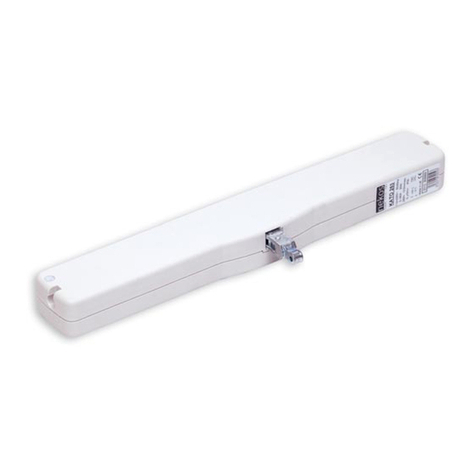
nekos
nekos KATO 253 Reference manual
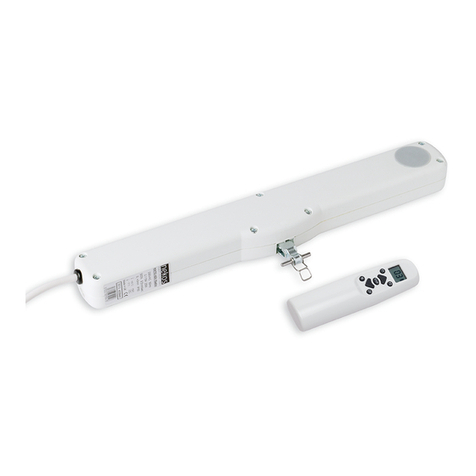
nekos
nekos KATO ADV RADIO User manual
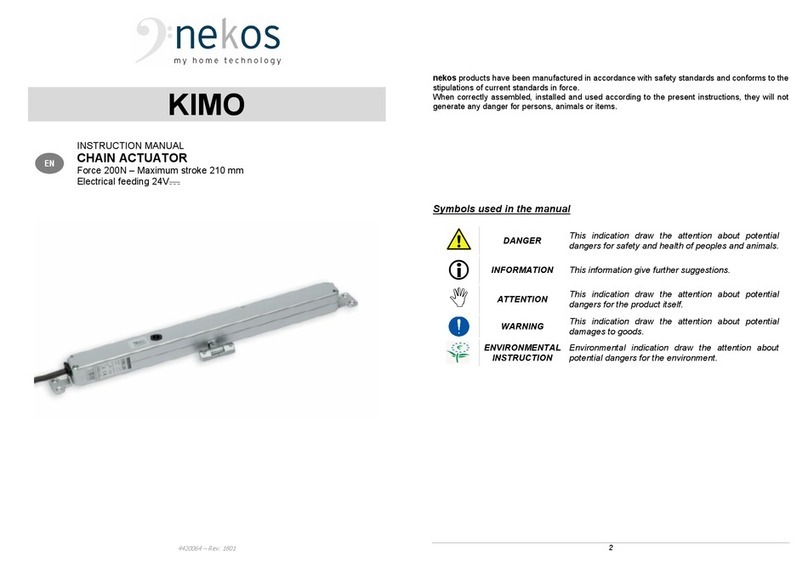
nekos
nekos KIMO User manual
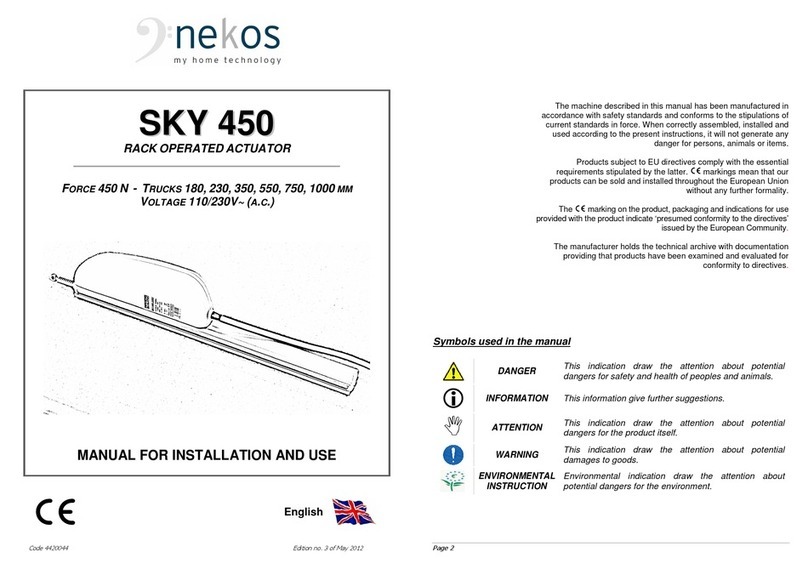
nekos
nekos SKY 450 Quick start guide
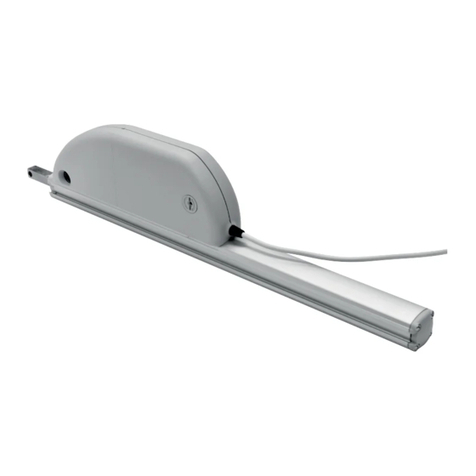
nekos
nekos SKYRO 650 User manual
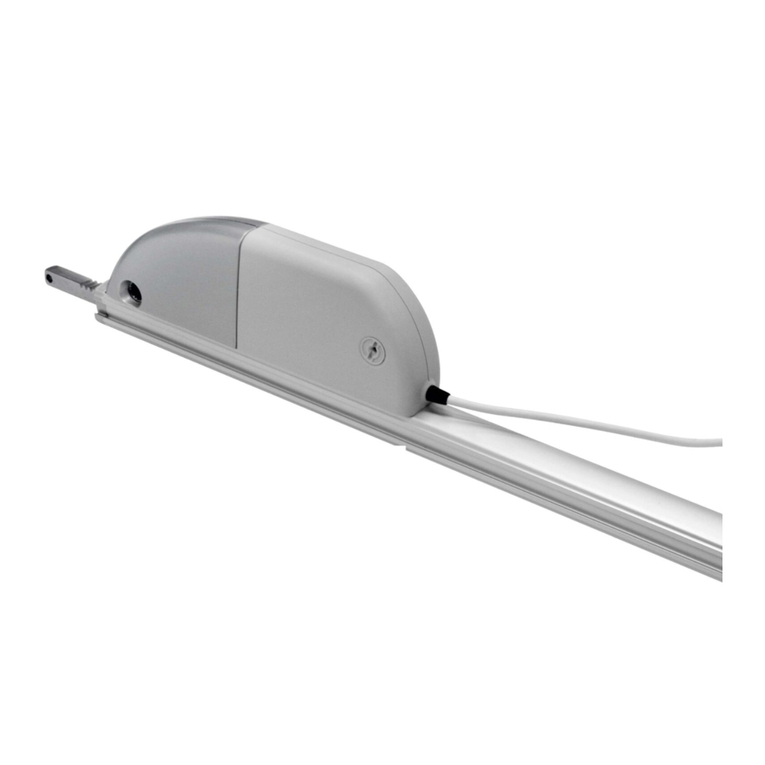
nekos
nekos SKYRO 850 User manual
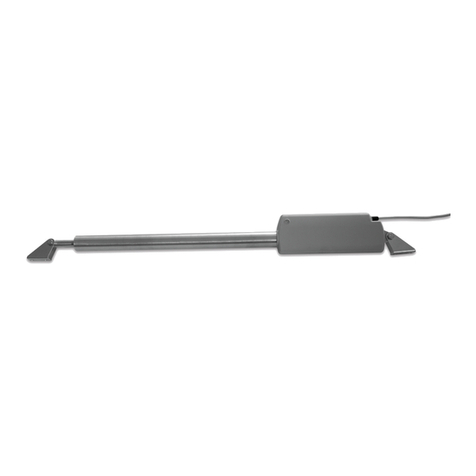
nekos
nekos ROCK 230 V User manual
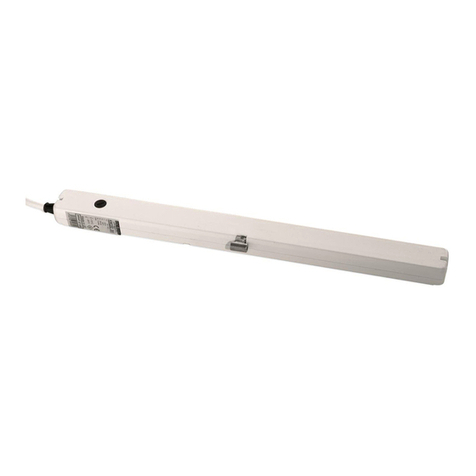
nekos
nekos KIMO 202 User manual
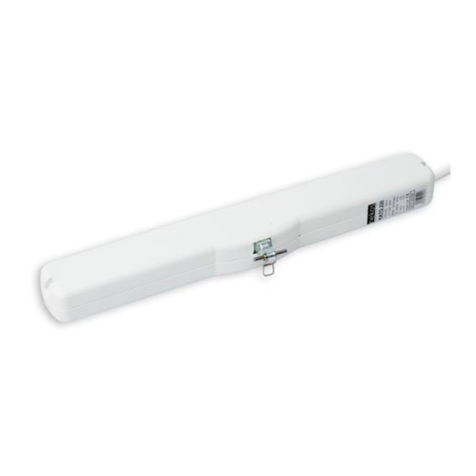
nekos
nekos KATO RADIO 230V User manual

nekos
nekos SKY 450 User manual
Popular Controllers manuals by other brands

Alcor Micro
Alcor Micro AU9216 Technical reference manual
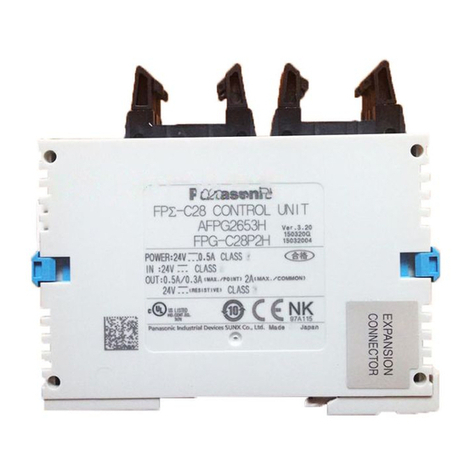
Panasonic
Panasonic FP (Sigma) Specifications
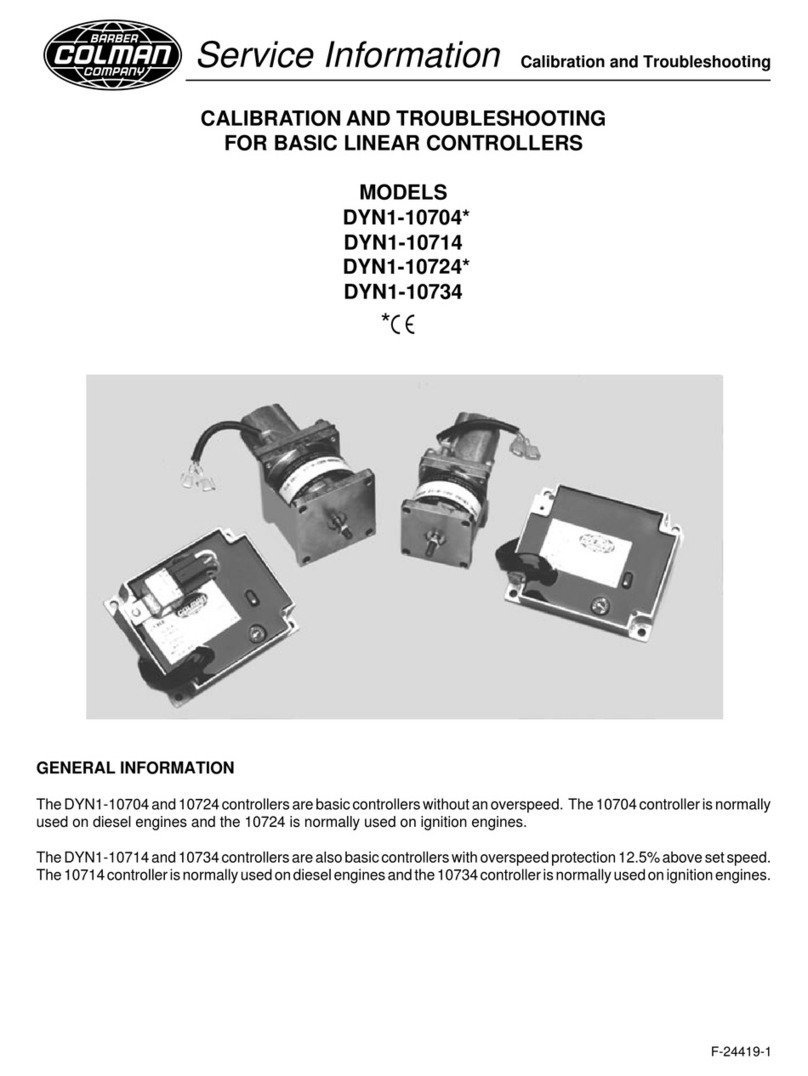
Barber-Colman
Barber-Colman DYN1-10704 Series Service information
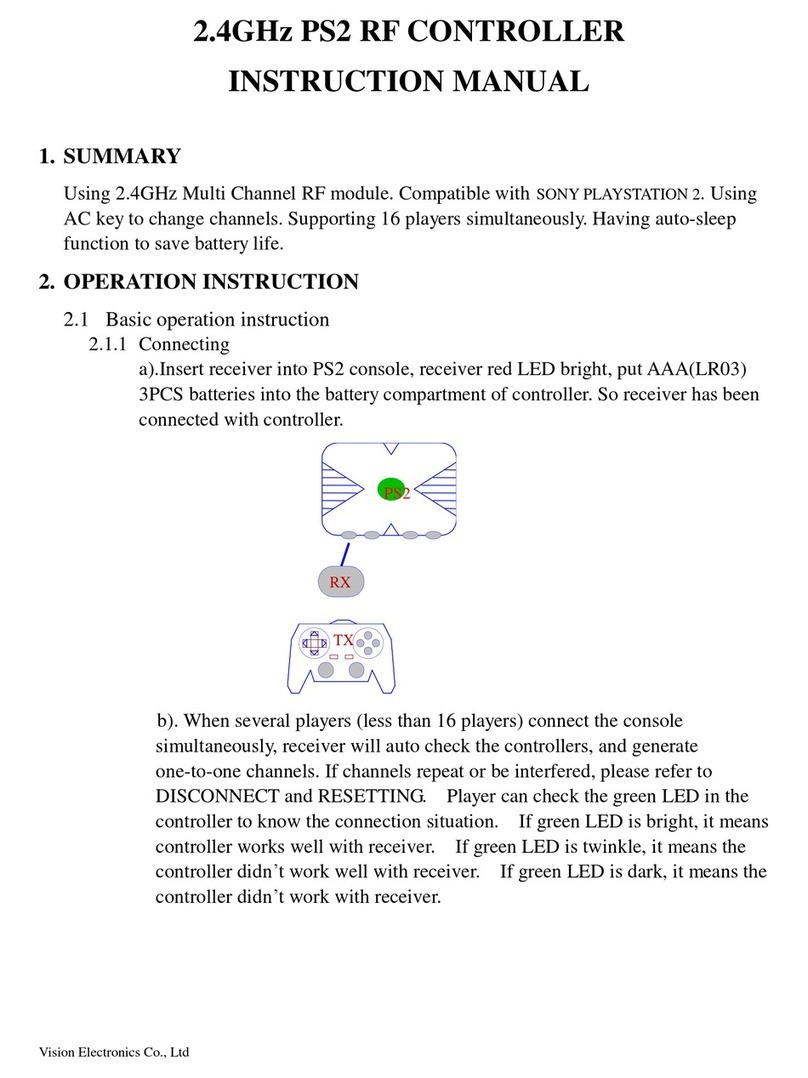
JOYTECH
JOYTECH JS109HR2 instruction manual
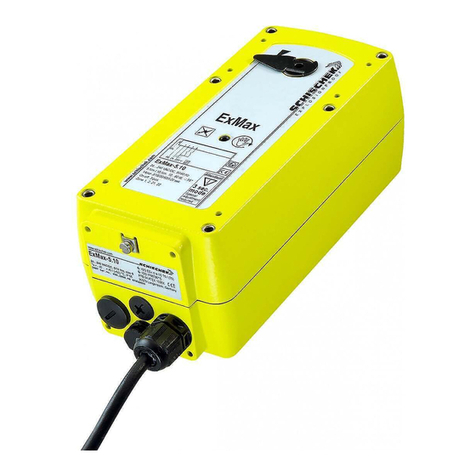
Schischek
Schischek ExMax Series Wiring diagram
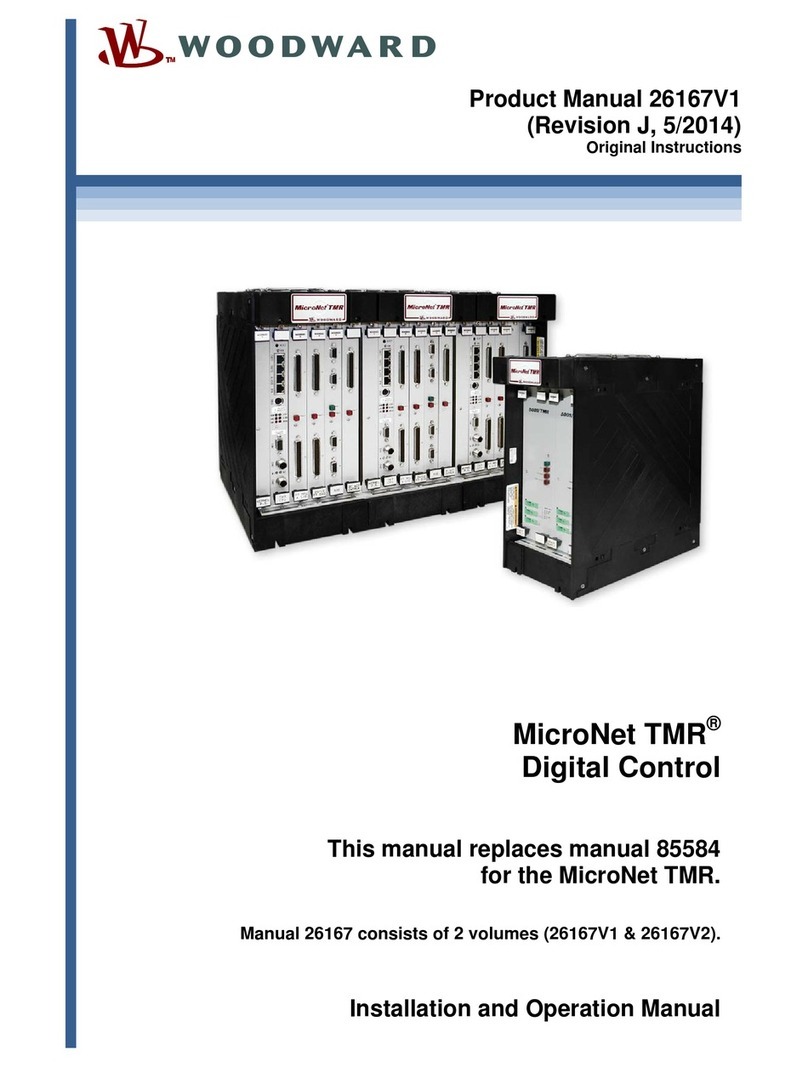
Woodward
Woodward MicroNet TMR Installation and operation manual

